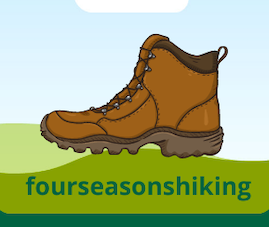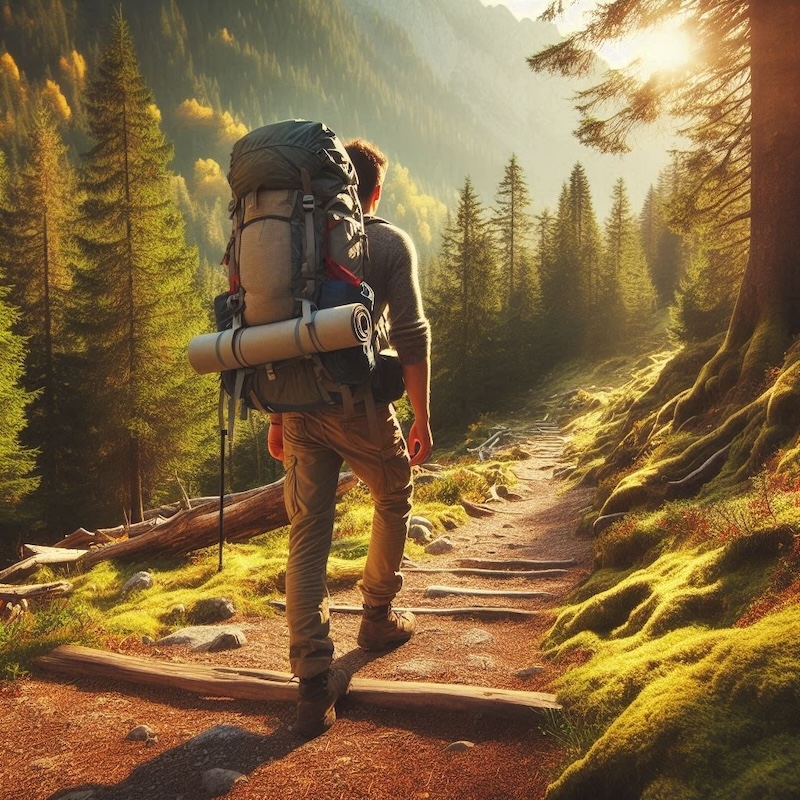Multi-day hiking trips are a unique way to connect with nature and test your limits. You’re not just walking; you’re immersing yourself in the raw beauty of the great outdoors. Every day brings a new challenge, a new vista, and a new sense of accomplishment.
Planning is crucial for a successful trip. Think of this process as laying the groundwork for an amazing adventure. The better your plan, the smoother your hike will be. It’s not about eliminating spontaneity but about ensuring you’re prepared for whatever comes your way.
Seasoned hikers can offer a wealth of knowledge. Their stories and experiences often highlight things you might not think about. Things like the importance of comfortable footwear, the best spots for breathtaking views, or how a simple piece of gear can make all the difference. Listening to their advice and incorporating it into your planning is wise.
Remember, mental preparation is just as important as physical preparation. Visualizing yourself on the trail, overcoming obstacles, and reaching milestones can boost your confidence and set a positive tone. Planning your itinerary, knowing where you’ll be each night, and generalizing what you’ll face make the hike less daunting and more manageable.
Selecting Your Trail: Find the Perfect Fit
Choosing the right trail sets the stage for your entire trip. Not all trails are created equal, and finding one that matches your skill level and interests is key. From national parks to remote wilderness areas and mountain ranges, each offers a unique experience.
Research is your best friend here. Look up current trail conditions and difficulty levels to understand what to expect. Some trails, with steep inclines and rough terrain, might be more challenging, while others offer a gentler walk through scenic landscapes. Check trail reviews and talk to fellow hikers. Their insights can be invaluable.
Seasonal weather plays a massive role in trail availability and difficulty. Some trails might be snow-covered or impassable during certain times of the year. Knowing the weather patterns can help you pick the right time to hit the trail and pack appropriately.
Don’t overlook the value of consulting guidebooks and online resources. Trail maps, elevation profiles, and detailed descriptions can all help you make an informed decision. Even better, join hiker forums or local hiking groups. They can provide firsthand information and might even offer companionship for your journey.
Each trail offers a unique set of challenges and rewards. Think about what excites you most about hiking—spectacular views, wildlife encounters, a sense of solitude—and choose a trail that delivers that experience. If you’re new to multi-day hikes, start with a well-trodden trail known for being beginner-friendly.
Essential Gear: Pack Smart, Stay Safe
Packing the right gear is crucial to prepping for your hike. What you bring can make or break your experience, so choose wisely. Start with your main pieces: a durable tent, a reliable backpack, and a good-quality sleeping bag. Your tent should be lightweight yet sturdy enough to handle weather changes. Invest in a backpack that fits well and distributes weight evenly; it’s your lifeline on the trail.
When it comes to clothing, layering is key. Weather can be unpredictable, and having the right layers means you can adjust as needed. Start with moisture-wicking base layers, add insulating mid-layers, and top it off with a waterproof, windproof jacket. Don’t forget a hat, gloves, and extra socks – your feet will thank you.
Topo maps of the area you will be hiking, a reliable baseplate compass, and knowledge of how to use these together are non-negotiable for navigating. Even if you’re familiar with the trail, having these tools can be a lifesaver if weather conditions change or you take a wrong turn. A compass and the right maps can keep you safe.
Safety gear shouldn’t be an afterthought. A well-stocked first aid kit is essential. Include bandages, antiseptic wipes, pain relievers, blister treatment, and personal medications. Emergency shelters can offer critical protection, like a lightweight bivy sack or space blanket. Keep communication tools handy – a whistle, a mirror for signaling, and if possible, a satellite phone or personal locator beacon.
Remember, every ounce counts when you’re carrying it for days. Pack smart, prioritize multi-use items, and always be prepared for the unexpected.
Meal Planning: Fuel Your Journey
Feeding yourself on a multi-day hike requires some thought and preparation. Good nutrition is key to keeping your energy and morale high. Start by planning meals that are nutrient-dense but lightweight. Think about portable foods like dehydrated meals, trail mixes, and energy bars. They pack a lot of punch without weighing down your pack.
Hydration must be considered. Use a water purification method, such as a filter, tablet, or lightweight UV purifier. Streams and lakes can be lifesavers, but only if the water is safe to drink.
Meal prepping is all about maximizing efficiency. Pre-package your meals into portions to make cooking quicker after a long day. Use resealable bags or small containers to keep everything organized and safe from spills. Plan a balance of proteins, carbs, and fats to fuel your body properly.
Remember snacks. Quick, high-energy options like nuts, jerky, and dried fruits are perfect for a boost on the trail. They’re easy to eat while moving and give you the quick energy you need without stopping for a full meal.
If you have any dietary restrictions or allergies, plan to ensure you have plenty of safe food options. Hiking can burn many calories, so aim for highly efficient foods that meet your dietary needs without extra bulk.
Another crucial step is keeping your food safe from wildlife. Use bear-proof containers or hang your food from a tree branch away from your sleeping area. This keeps you—and the animals—safe.
Health and Safety: Be Prepared for Anything
Being physically prepared can make all the difference on the trail. Training in advance by taking shorter hikes and gradually increasing your distance can help build the stamina needed for multi-day trips. Don’t forget exercises that strengthen your core and legs; they’ll do the heavy lifting.
Understanding common hiking injuries and how to prevent them is essential. Blisters, sprains, and dehydration are frequent issues. Wearing well-fitted, broken-in footwear and moisture-wicking socks can prevent blisters. Proper hydration and taking breaks can help avoid dehydration and overexertion.
Being ready for emergencies means knowing what to do if things go wrong. Learn basic first aid and carry a first aid kit. If you’re hiking with a group, ensure everyone knows the plan in case of an injury. Sometimes, it’s as simple as knowing how to make a splint or treating a bad blister to keep the hike on track.
Wildlife encounters can be thrilling but dangerous. Make yourself familiar with the local wildlife, their habits, and the dos and don’ts of encounters. Carry bear spray or a noise-making device if you’re in bear country. Store food properly to avoid attracting animals to your campsite.
Always tell someone your itinerary and expected return time. This way, help will likely find you quickly if something goes wrong. Carry identification and a small emergency contact info card in urgent situations.
Leave No Trace: Hiking Responsibly
Part of respecting the great outdoors is ensuring your presence doesn’t negatively impact you. The Leave No Trace principles provide guidelines that every hiker should follow to preserve the beauty and integrity of nature.
Minimizing your environmental footprint starts with being conscious about where you step and camp. Stick to established trails and campsites to avoid damaging vegetation and causing soil erosion. If you must venture off-trail, carefully avoid trampling delicate plant life.
Proper waste disposal is critical. Pack your trash, leftover food, and biodegradable items like fruit peels and nutshells. These can attract wildlife and disrupt natural behaviors. Use designated waste disposal areas when available, and if you’re in a more remote location, follow guidelines for properly burying human waste at least 200 feet away from water sources.
Keep campfires small and only in permitted areas. Use a camp stove for cooking to minimize fire risk. If you make a fire, ensure it’s fully extinguished before leaving. Gather firewood responsibly, using only small sticks and downed wood, and never cut live trees or branches.
Respect wildlife by observing from a distance and never feeding animals. This maintains their health and natural behaviors and keeps them safe. Store your food securely and use bear-proof containers to prevent attracting animals to your camp.
Finally, be considerate of other hikers. Keep noise levels down, yield the trail to others, and respect the wilderness’s peace and solitude. A friendly nod or greeting can add to the positive experience for everyone on the trail.
Promoting these practices helps preserve nature for future generations but also enhances one’s own hiking experience. The more effort one puts into respecting the environment, the more rewarding one’s connection with nature will be.


Hi Lonnie,
What a great read! My wife and I have been talking a lot about multi-day hikes lately, but the thought of an overnight adventure is a bit daunting for this 50+ guy. We do a lot of day hikes in PA, but transitioning to an overnight is a new challenge for us. Do you have any quick tips for a dry run before we head out for an overnight trip? I’d love to hear your recommendations on whether the Appalachian Trail is a good starting point for beginners. It’s exciting to think about connecting with nature on a deeper level, but we also want to be well-prepared. Thanks for the insights!
Opa
Hi Opa, As far as the AT is concerned, it depends on the location. I understand that PA has lots of boulders in some places. However, you know more about the AT in PA than I do, I have concerns about weather conditions and how important it is to check the local weather for where you plan an overnight. Please feel free to review the article again because the principles apply.
Lonnie
Hi!
Your post makes me want to go out on a hike! Maybe not a multi day hike, but at least a good day hike in a forest. We have some really nice state parks less than 2 hours drive from us that have wonderful trails. I have only been on one multi day hike and that was back in my early 30s. We did a 17 mile, three-day hike in the Mark Twain National Forest in Missouri. It was a lot of fun. We had an experienced backpacker that had all the equipment for us and knew how to plan. We learned the value of planning for a trip in that experience. These days at my age (67), I’m not sure I could sleep on the ground in a tent like that. Even a nice day hike can take me back to nature though and give me some challenges.
– Scott
Hey Scott, I hear you! I would love to go on a day hike, but my legs would not hold up to complete the hike.
Lonnie